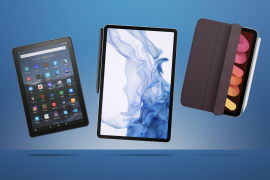Samsung Galaxy S24 review: all about AI
Samsung boards the AI express – but are Exynos CPUs a backwards step, and can the Galaxy S24 still compete on cameras?
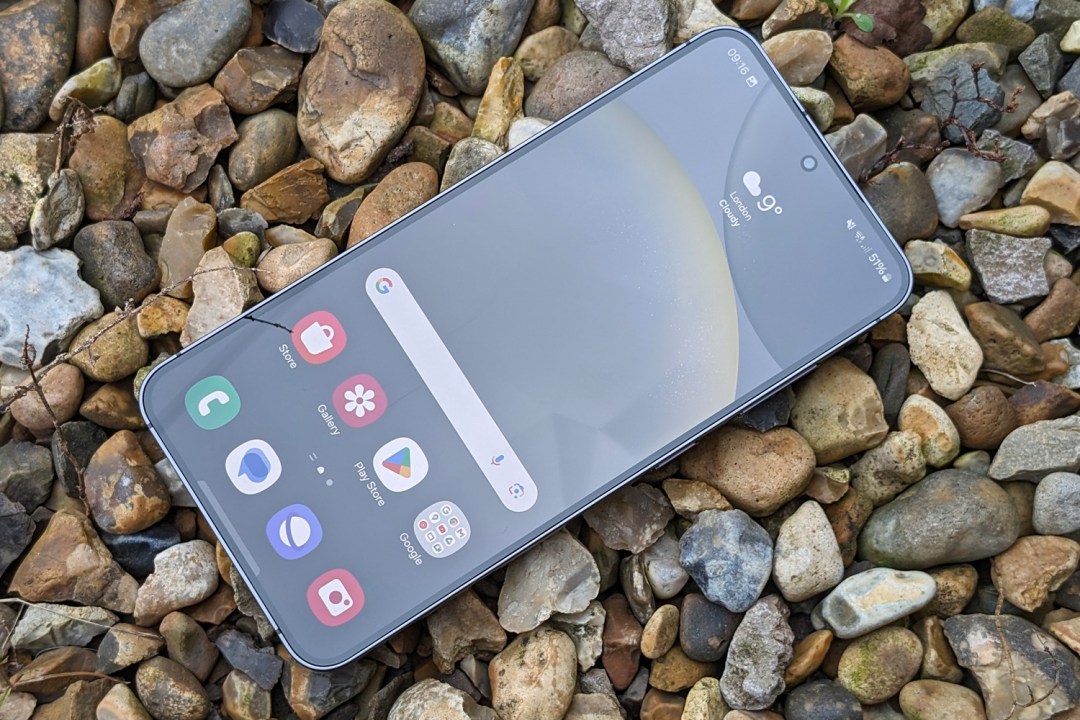
Stuff Verdict
The Samsung Galaxy S24 embraces AI and gets some welcome hardware tweaks. It’s not an exciting generational upgrade, and won’t appeal to camera spec snobs, but will surely sell like hotcakes anyway
Pros
- Streamlined design and slicker screen
- AI integrations can be very useful
- Powerful yet pocket friendly
Cons
- Bested by rivals on camera quality
- Exynos CPU not the best for battery life
Introduction
Every time Samsung introduces a new trio of flagship smartphones, it’s the smallest of the bunch I look forward to reviewing most. The Galaxy S24 may be the most affordable model, but it has the most to prove on the hardware front.
That’s especially true this year, with the Galaxy S24 Ultra given the titanium treatment and the S24 Plus getting bespoke internal upgrades. The baby of the bunch, meanwhile, has the lowest resolution screen and smallest battery.
Don’t let that fool you, though. There’s still enough here to convince iPhone owners to turn their backs on Apple, including Samsung’s first ever on-device AI. And with pricing lower than last year’s model, there’s little else like it in the Android world.
Review first published 2 February 2024. Latest change: Galaxy AI additions in One UI 6.1.1 software update
How we test smartphones
Every phone reviewed on Stuff is used as our main device throughout the testing process. We use industry standard benchmarks and tests, as well as our own years of experience, to judge general performance, battery life, display, sound and camera image quality. Manufacturers have no visibility on reviews before they appear online, and we never accept payment to feature products. Find out more about how we test and rate products.
Design & build: keep it in the family
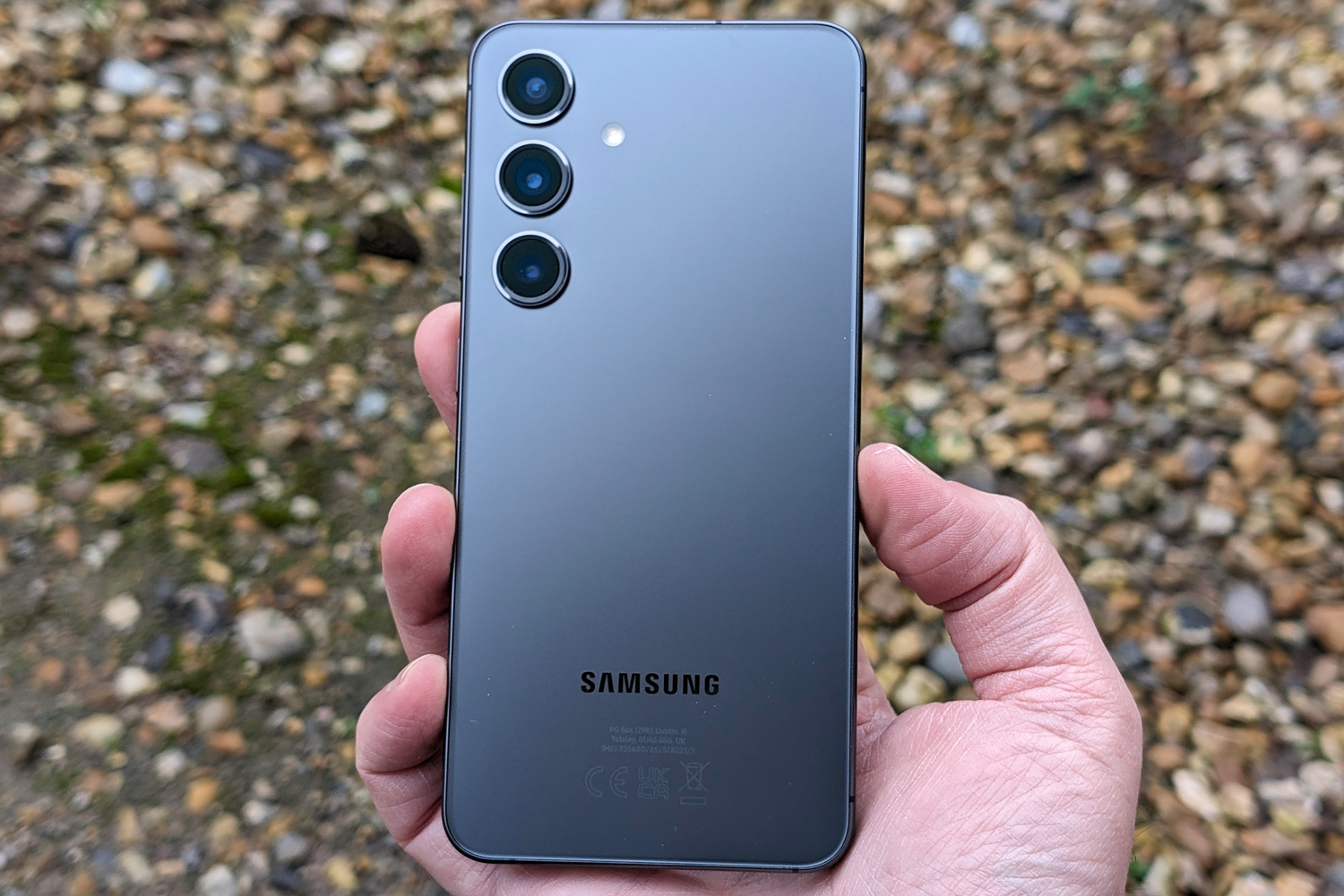
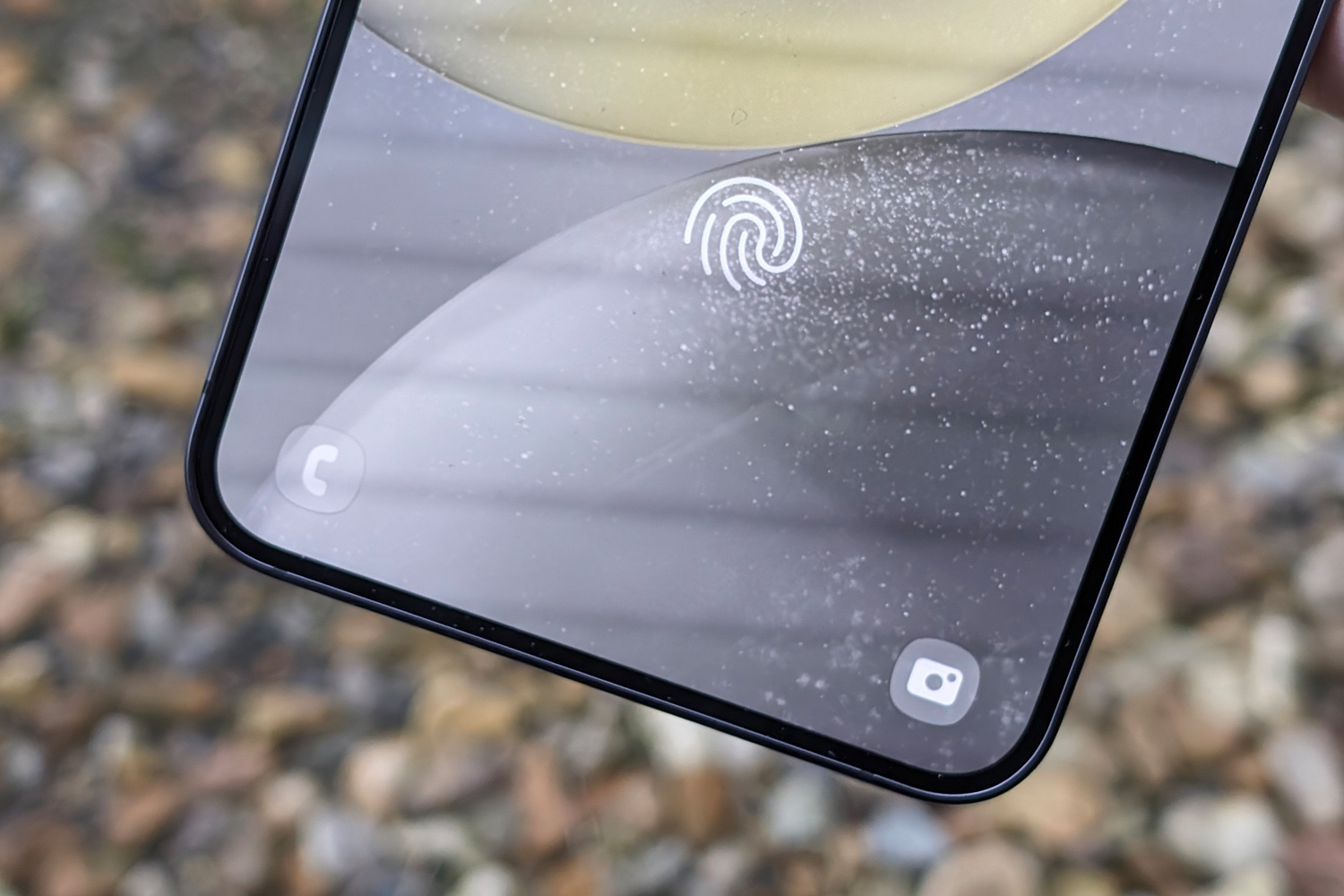
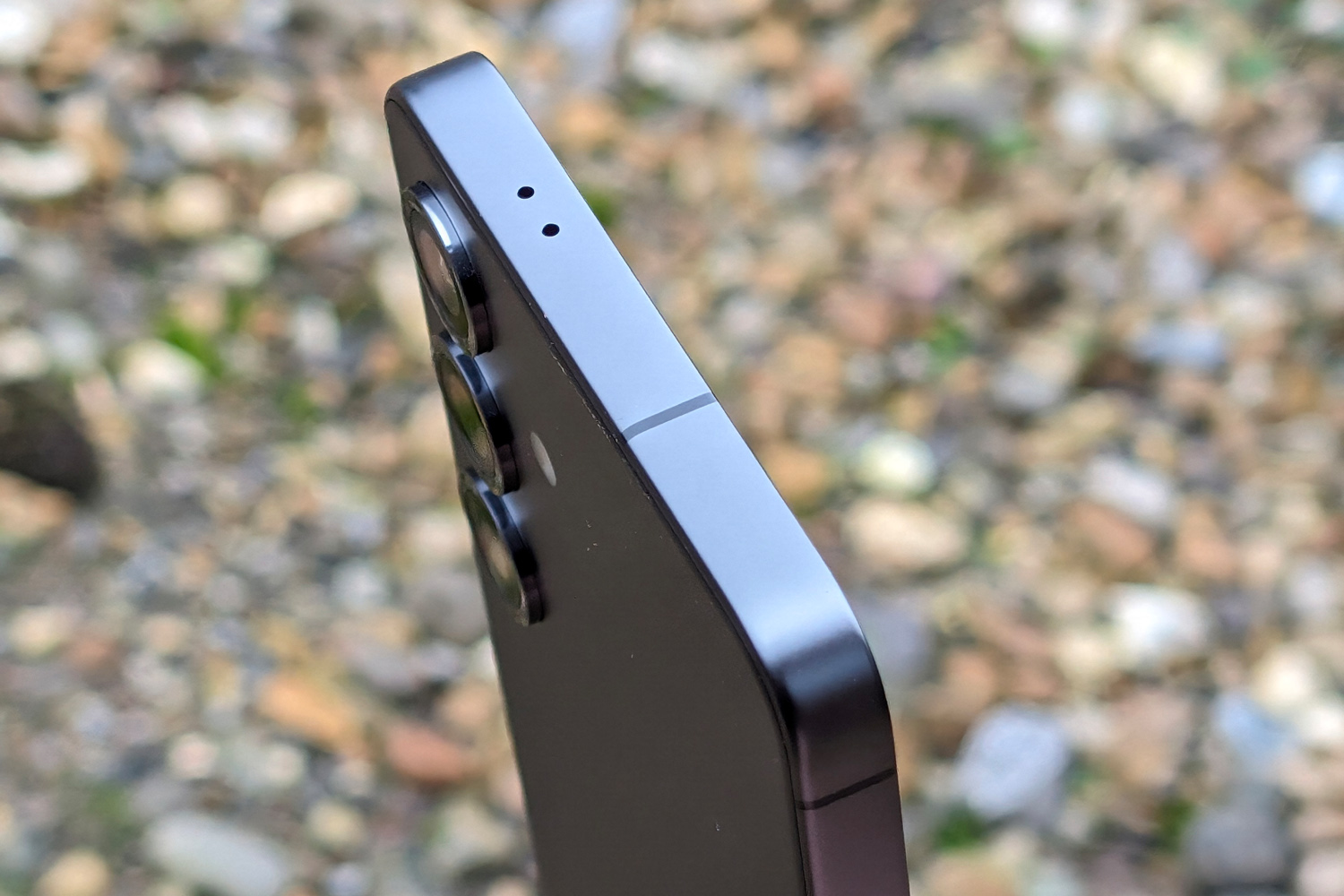
Samsung’s phones have been doing the mostly minimal thing for a few years now. The Galaxy S24 takes things a step further, ditching the S23’s slightly curved frame and polished finish for entirely flat sides and matte metal. It’s a subtle change, and one I had a hard time telling apart from an iPhone 15 when I picked both phones up with my eyes closed.
It doesn’t use titanium like the pricier Galaxy S24 Ultra, but the new ‘armor aluminium’ frame is a lot more durable than last year’s effort. I spotted no scuffs or scratches after several weeks of testing, and it hides fingerprint smudges very effectively.
The Gorilla Glass Victus 2 front and rear glass is tried and tested, having also appeared on the Galaxy S23. It prevents most light scrapes and scratches. Still, I’m gutted that Corning’s Gorilla Armor glass is exclusive to the S24 Ultra; its ability to reduce light reflections was transformative when using that phone outside on sunny days.
I’ve spent a little time with an Amber Yellow handset, which can appear gold, beige or peach depending on the lighting; it’s subtle rather than attention-grabbing, as is the Cobalt Violet model. Marble Gray and Onyx Black are much subtler, and sure to sell in higher numbers. My review unit was the latter. All will do an excellent job of disguising fingerprint marks. The Samsung web store has a few extra colours set aside as exclusives, though I’ve not seen them in person.
This is a very compact phone. The Android world largely sees 6.5in to 6.8in as a screen size sweet spot, with the Google Pixel 9 going 0.1in larger. The Asus Zenfone 10 might match it for both size and flagship-grade specs, but it’s very much in its twilight years. That makes the Galaxy S24 an easy pick anyone wanting the most pocket-friendly device possible and isn’t interested in checking out Apple’s latest offerings.
Screen & sound: bezels banished
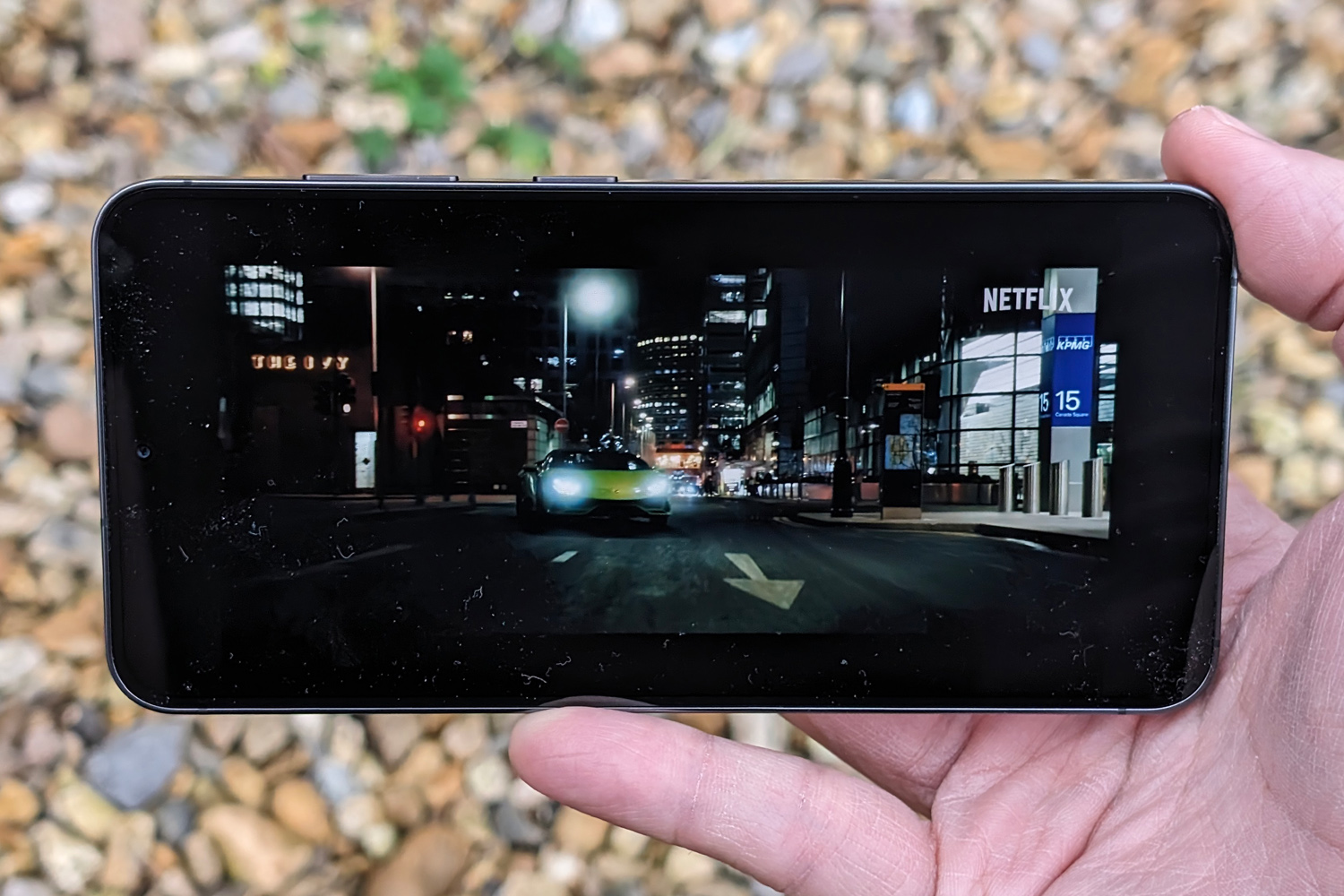
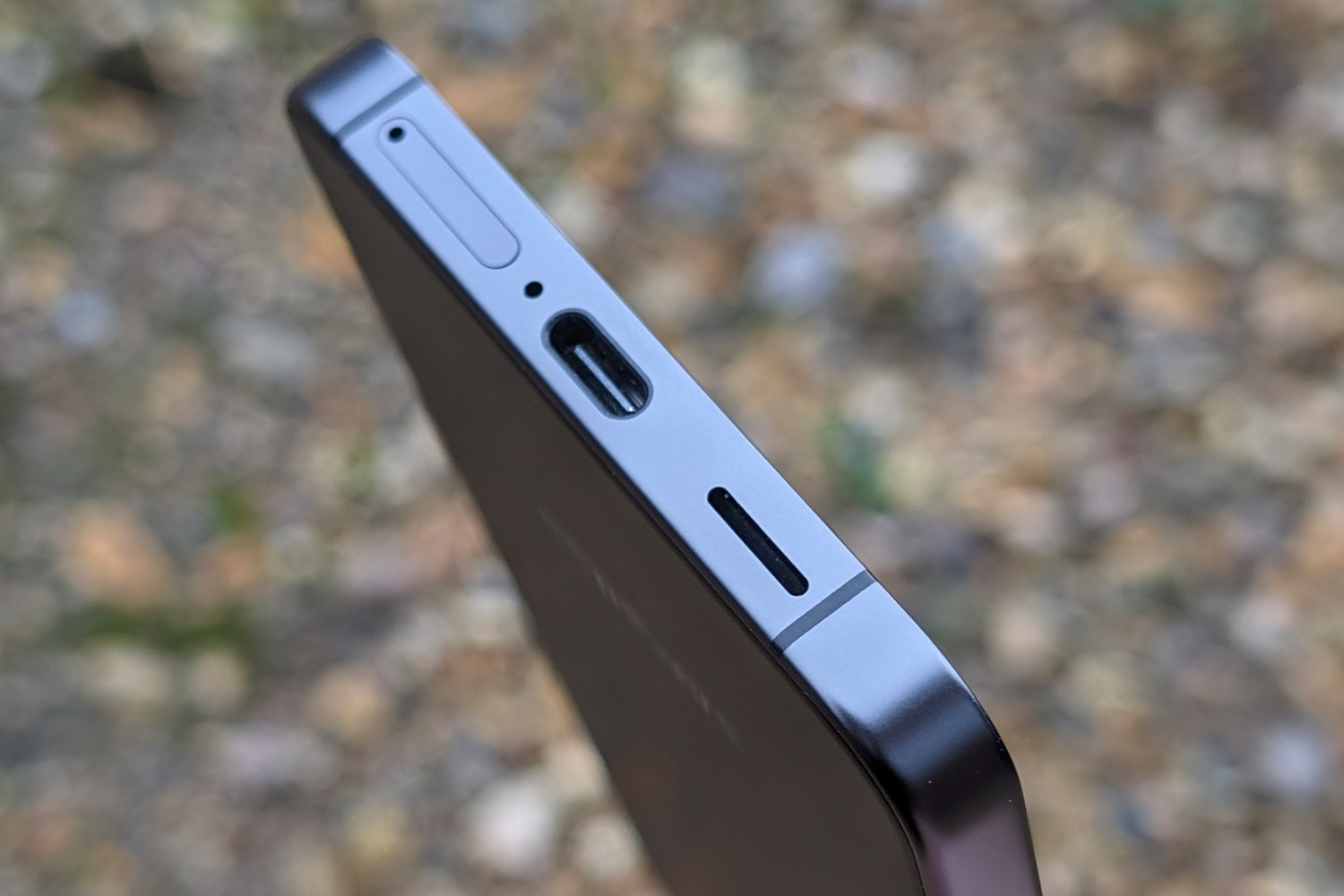
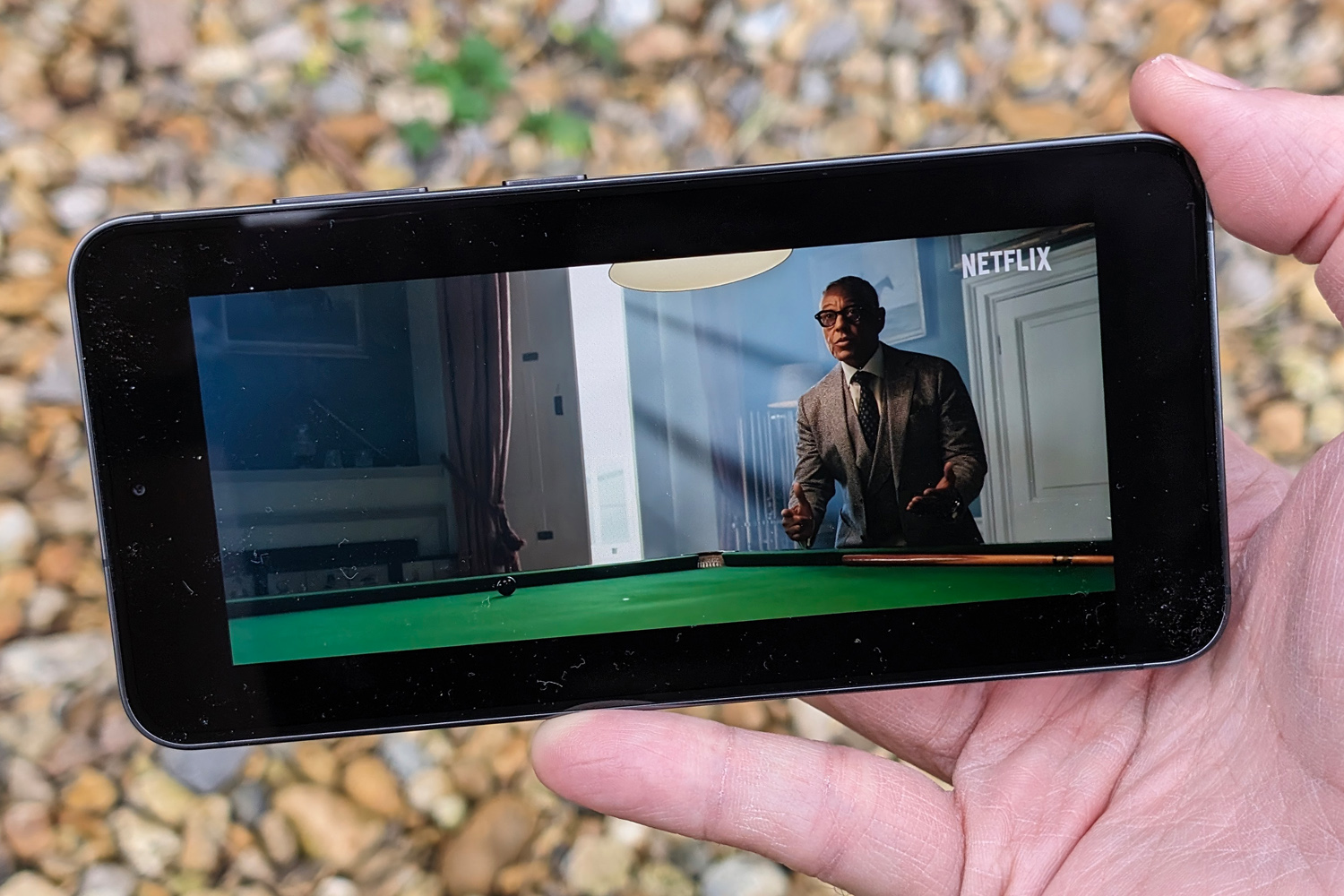
Given Samsung’s display division makes the lion’s share of AMOLED panels destined for smartphones, I wasn’t surprised that it delivered something special for the firm’s 2024 flagships. The Galaxy S24 has some of the thinnest display bezels I’ve seen on any phone that didn’t use curved-edge glass. It’s practically edge-to-edge, and disappears altogether with a suitably dark home screen wallpaper.
That means you’re getting 6.2in of usable screen space, up from 6.1in on the Galaxy S23. The panel sticks with a FHD+ resolution, but now uses LTPO adaptive refresh tech to switch between 1-120Hz for maximum battery savings on static images. It felt smooth to react to movement based on my swipes and scrolls, which is useful given there’s no way to force 120Hz on permanently.
Samsung says peak brightness now hits a heady 2600 nits, up from 1750 nits on the Galaxy S23. An iPhone 16 Pro Max can manage a peak 2000 nits, while the OnePlus 12 claims a mammoth 4500 – but don’t be deceived. Those numbers are for just a tiny portion of the screen, with manual and adaptive brightness modes being much lower. The S24 still gets more than bright enough to see clearly outdoors.
The underlying OLED panel pumps out the vivid and dynamic colours I’m used to seeing on Samsung phones, with excellent contrast to give HDR content serious oomph.
There haven’t been any real changes on the sound front, from what I can tell. That means one down-firing speaker, one front-facing earpiece speaker, and no 3.5mm headphone port in sight. Volume is respectable, as is mid-range clarity, but Bluetooth remains best for private listening.
Cameras: three’s a crowd
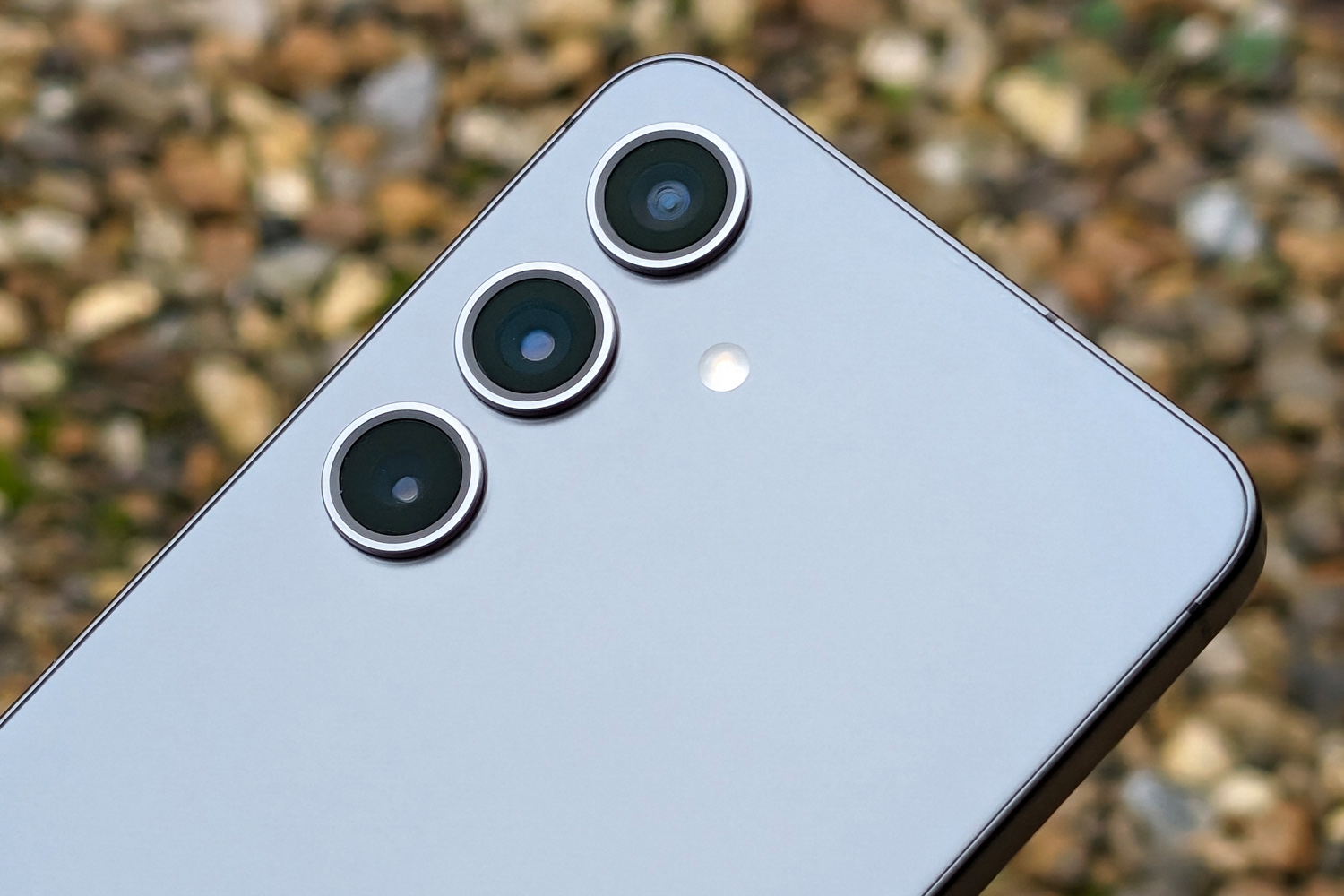
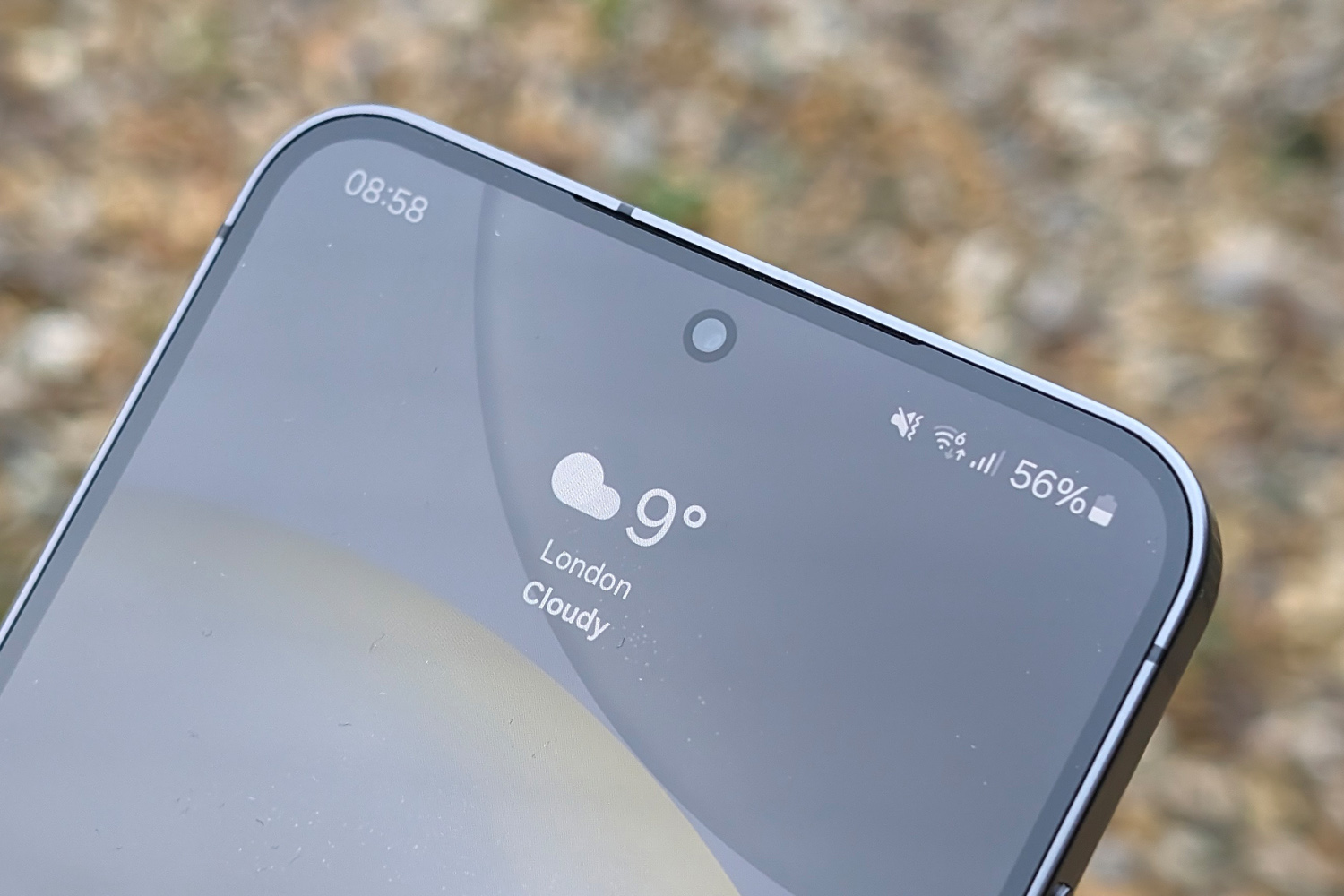
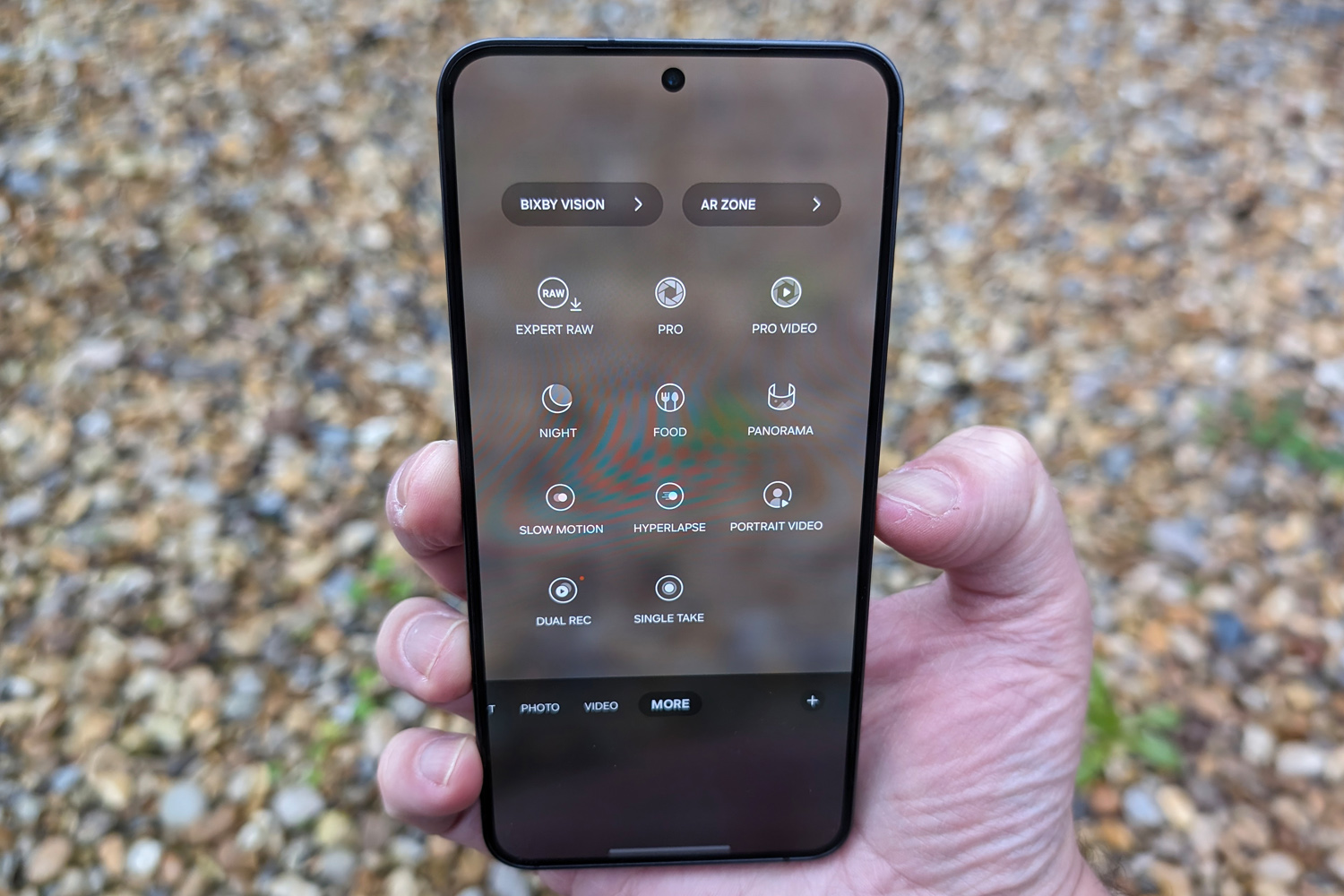
With a 50MP main snapper, 10MP telephoto and 12MP ultrawide, the Galaxy S24’s cameras are effectively now three years old. The lead camera keeps its f/1.8 aperture lens, dual pixel autofocus tech and optical image stabilisation; the 3x optical zoom telephoto tops out at f/2.4, with PDAF and OIS; and the ultrawide sticks with f/2.2 glass. The exact same setup first appeared on the Galaxy S22.
I thought that was a bold move by Samsung at first, given firms like Vivo and Oppo have made huge strides with sensor hardware and image processing recently. But Google and Apple are the real competition, and both are content to stick with two lenses on their mainstream models. Samsung was already up to par with those two on computational photography and low-light ability, so has instead focused on editing using generative AI.
Deleting unwanted objects and moving others around the frame is a trick I’ve seen previously on the Google Pixel 8 Pro. But removing unwanted reflections from your shots with a tap, or expanding a tightly cropped pic and having the phone fill in the missing info? That’s very cool. The results weren’t always flawless, but most were very convincing indeed. Adding a watermark and ‘edited with AI’ metadata flag is a nice touch, though when have those things ever stopped edited images from taking on a life of their own on the web?
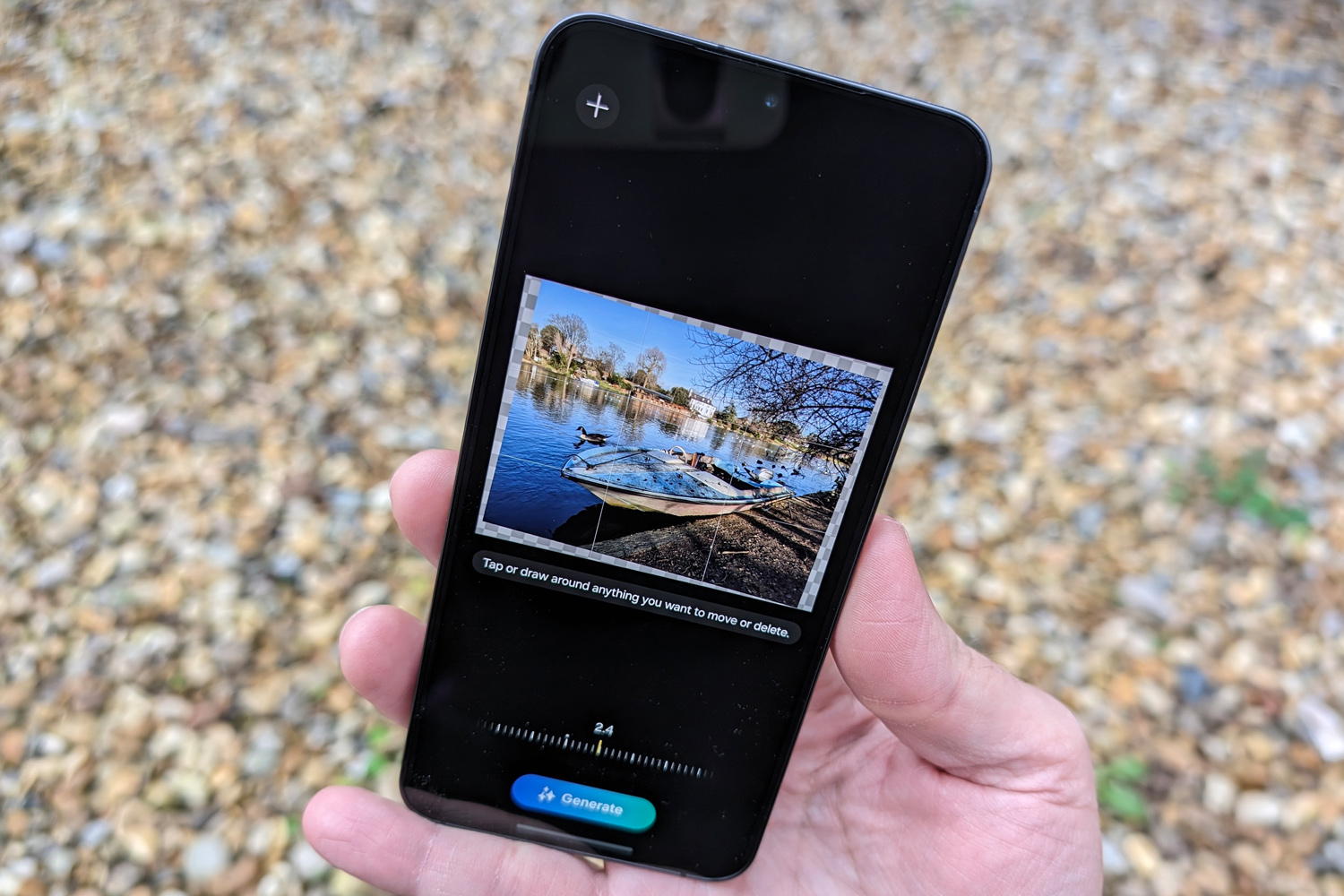
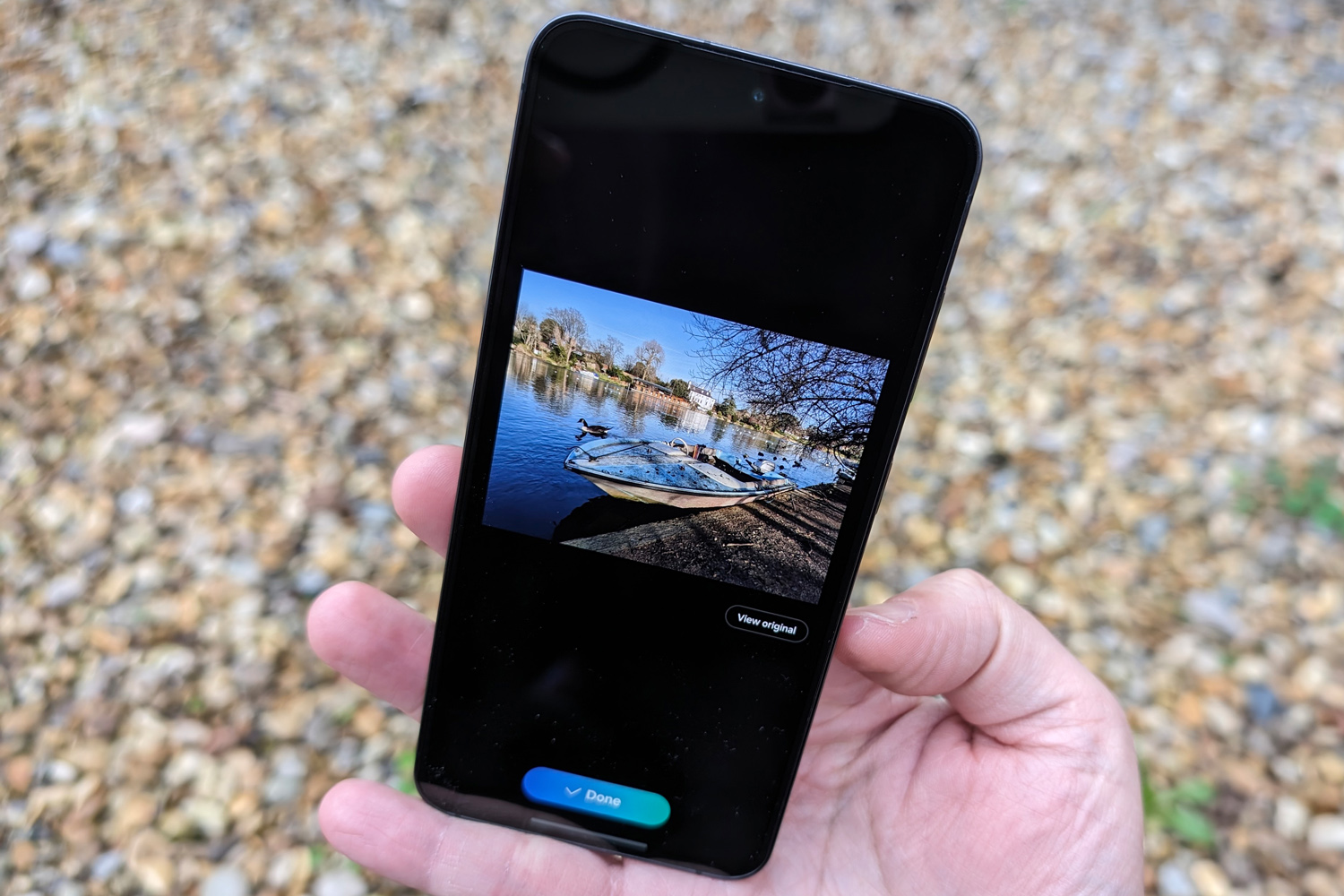
The cameras themselves take the sort of overly vibrant, HDR-infused images I’ve come to expect from Samsung phones. Personally I prefer a lighter touch, but many users will be happy to slap their snaps straight onto Instagram, no filters required. That’s doubly true now the social network plays nicely with Samsung’s HDR file format.
Spend most of your camera time with the main snapper for the cleanest, most well-defined images; the other two are a close match for colour, contrast, and exposure, but aren’t quite as detailed. There’s not a huge amount in it, though. The ultrawide avoids lens distortion, but lacks the close focus distance seen on rivals with a macro mode. All three feel quick to focus, but fast-moving subjects can be tricky to catch without blurring.

















The zoom lens produces sharper shots than either the Pixel 8 or iPhone 15 can manage with their digital zooms, but things are closer than I expected during the day. Samsung extends a lead at night. I also like the 3x magnification for portrait shots, as you don’t need to get so close to your subject. Simulated bokeh is pretty convincing, though stray hairs can sometimes catch out the processing.
At night, the Galaxy S24 understandably takes a back seat to phones with huge 1in sensors on clarity and image noise. I put the main sensor on the same level as Apple and Google’s mainstream models, but OIS does make a difference to zoom shots. The image processing does tend to over-egg the pudding where brightness is concerned, artificially lightening scenes more than I like.


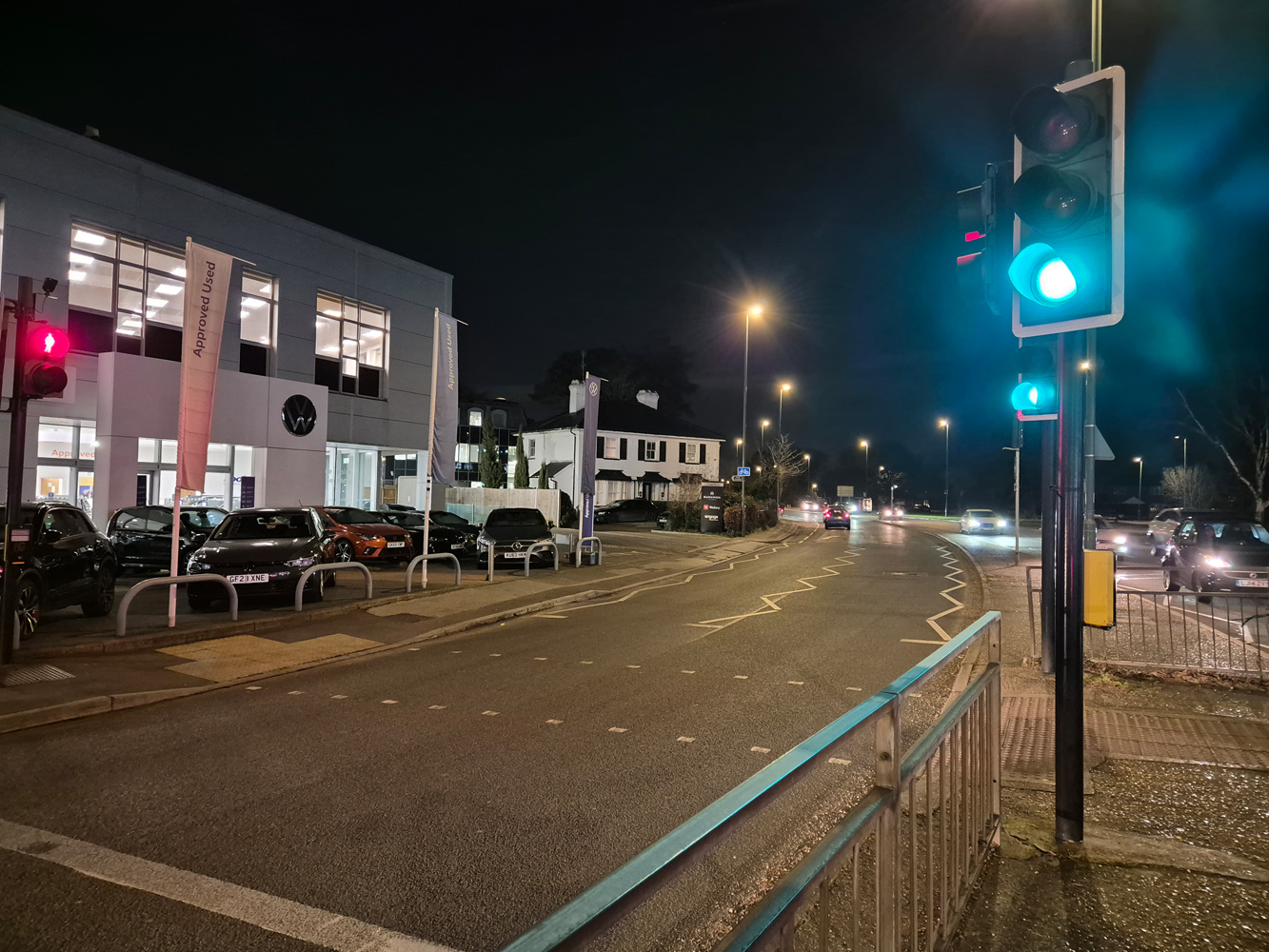



There’s no question there are better camera phones out there right now – but I doubt anyone that was happy with last year’s handset will feel short-changed here.
Software experience: AI infused
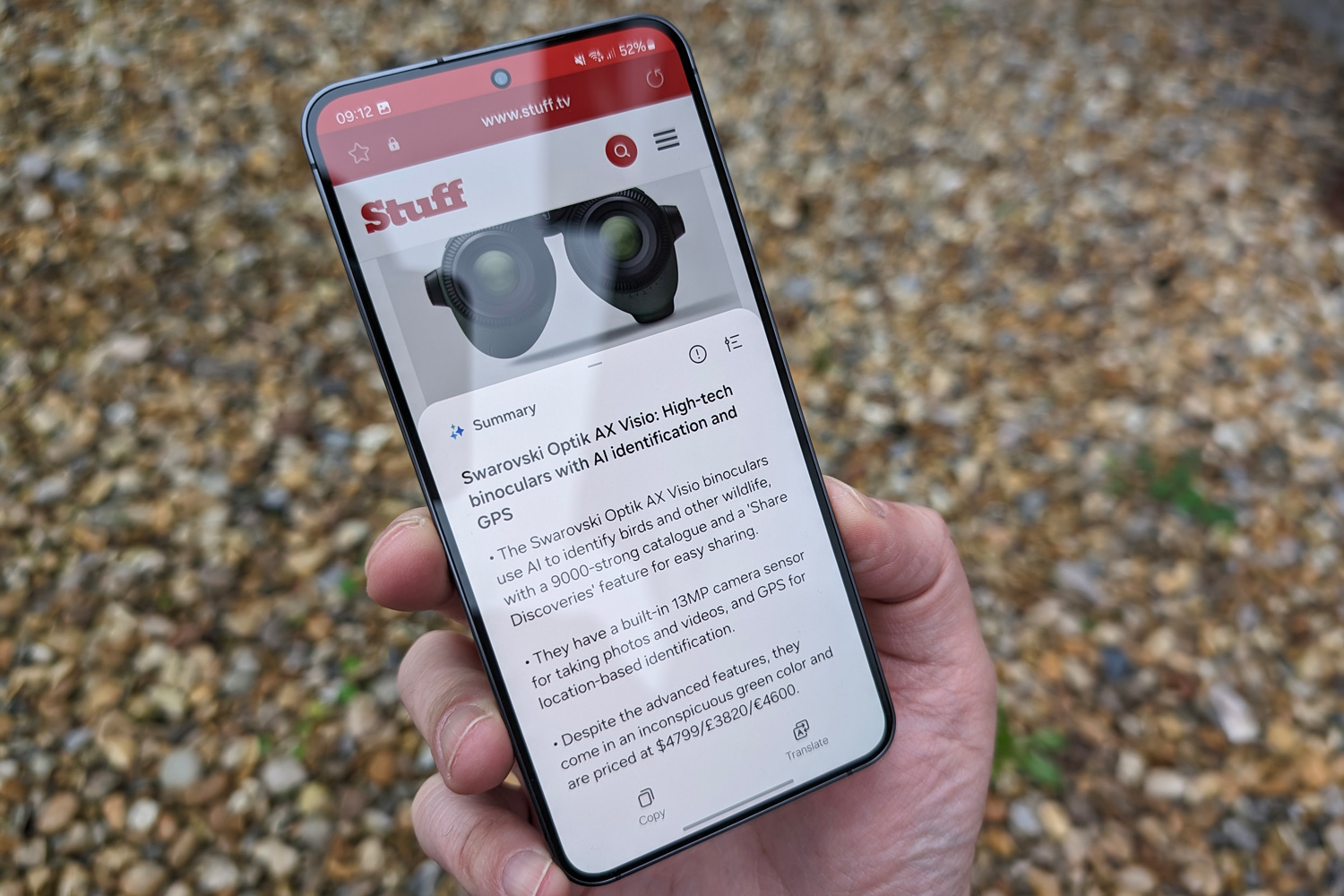
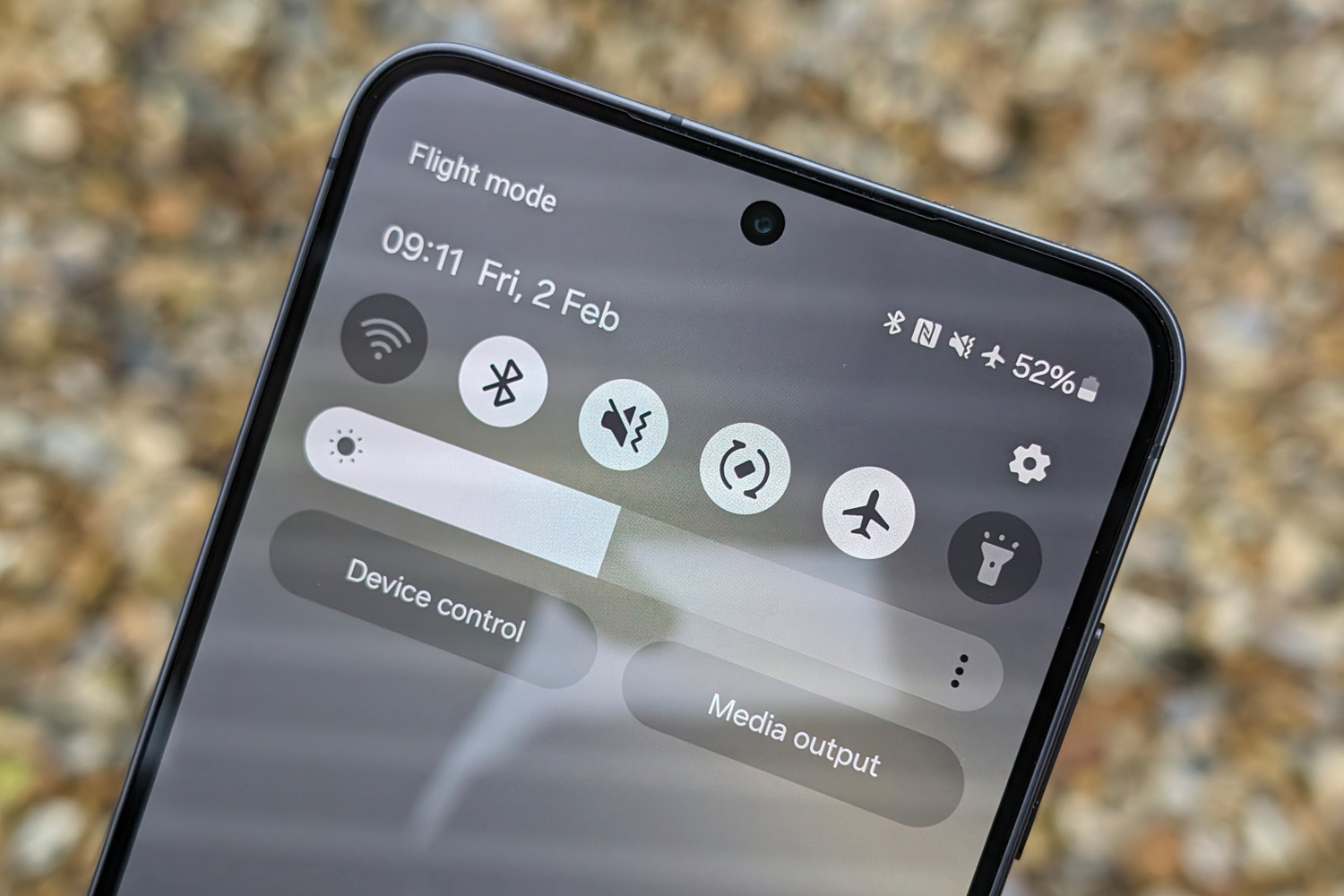
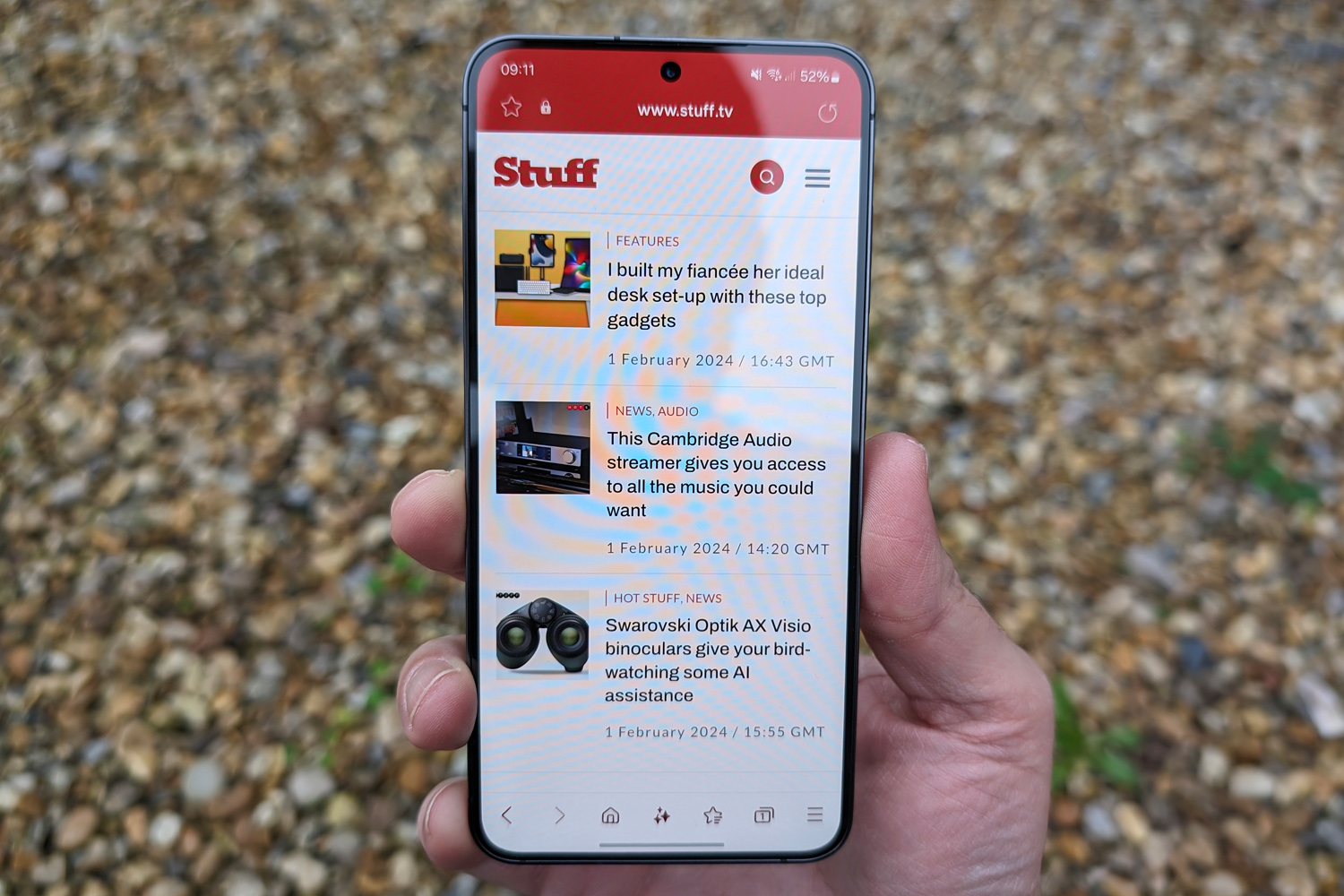
It’s not just the camera app that has been laced with artificial intelligence. Samsung’s OneUI 6.1 interface was packed full of AI additions at launch, including live voice translation for up to 13 languages through the native phone app. It did a great job recognising my stilted German.
Suggested Replies, Note Assist and Sketch To Image were all added in the OneUI 6.1.1 update, which followed the launch of the Galaxy Z Fold6 and Z Flip6.
Suggested replies generates quick written replies to messages in the Samsung Messages app, while the voice recorder app’s Transcript Assist can recognise multiple speakers, transcribe everyone’s talking on the fly, and then summarise the conversation with automatic formatting. The speech recognition wasn’t perfect when I recorded a work meeting but was almost as good as a paid-for transcription service.
Note Assist does the same for written notes within Samsung’s Notes app, and the stock keyboard can turn your hastily tapped-out messages into more formal ones that are more suited to business conversations.
These are all very slick, but do they appeal to the S24-buying majority? I’m not so sure. They make more sense on the productivity focused S24 Ultra. Sketch To Image is a fun addition, though, using generative AI to turn hand-drawn images into more realised pictures that are great for sharing.
I was most impressed by Circle to Search. A long press on the homescreen button lets you circle any onscreen object (in apps that allow screenshots, at least), with AI recognising it and performing a Google search. It recognised my local pub, offering directions and a phone number to book a dinner reservation. After taking a photo of a pair of sneakers, it showed me where I could buy them This is the sort of AI functionality I can get behind.
Android Auto also gets new AI message summaries and suggested actions, which put one button prompts to share an ETA or your live location. The interface has also been given a light OneUI visual overhaul for better consistency between phone and car.
It’s great that Samsung is committing to seven generations of OS updates and security patches for the S24, too. If you’re the sort to hold onto their phone for as long as possible, you’ll get just as much life out of one of these as you will from the latest iPhone.
Performance & battery life: own-brand internals
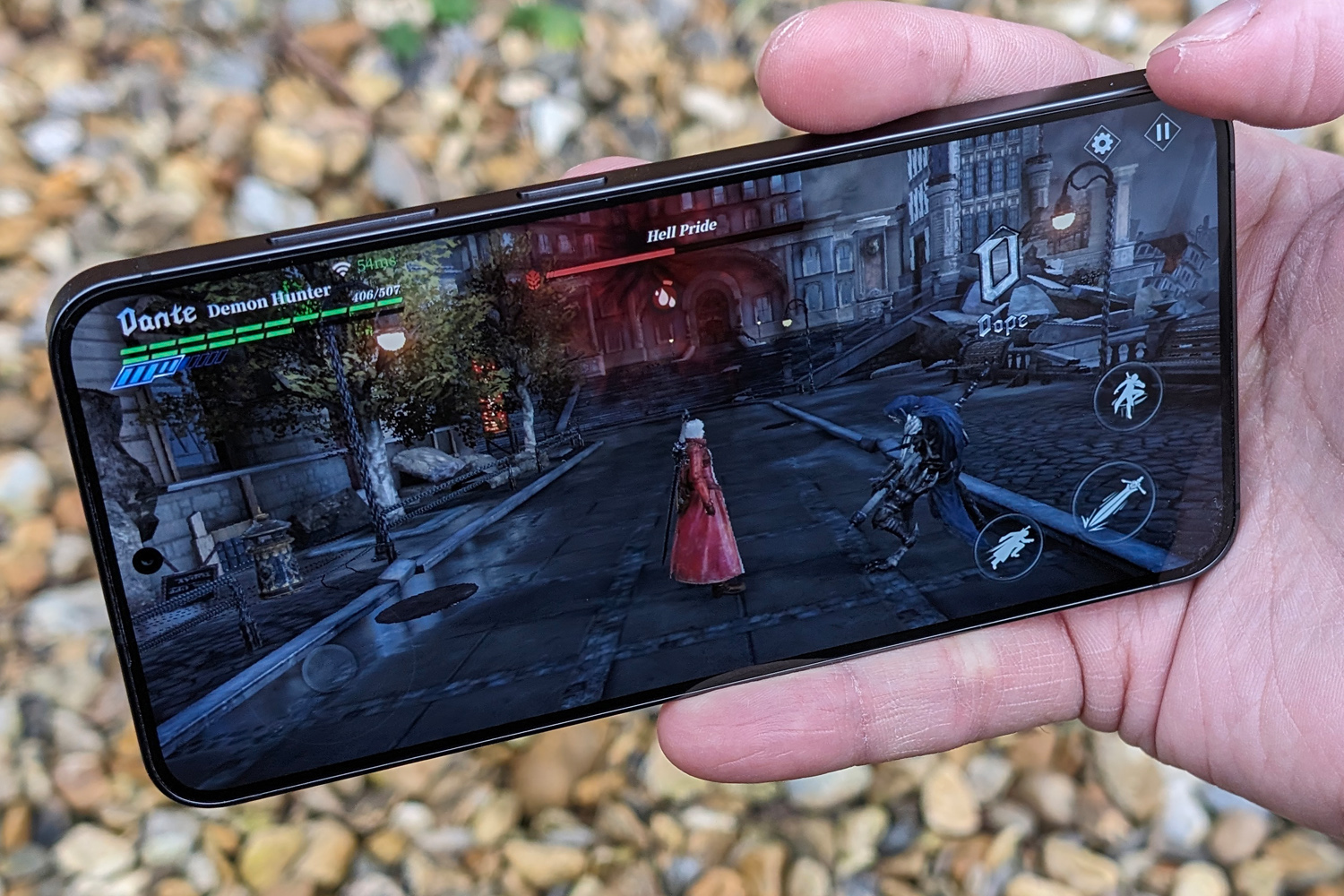
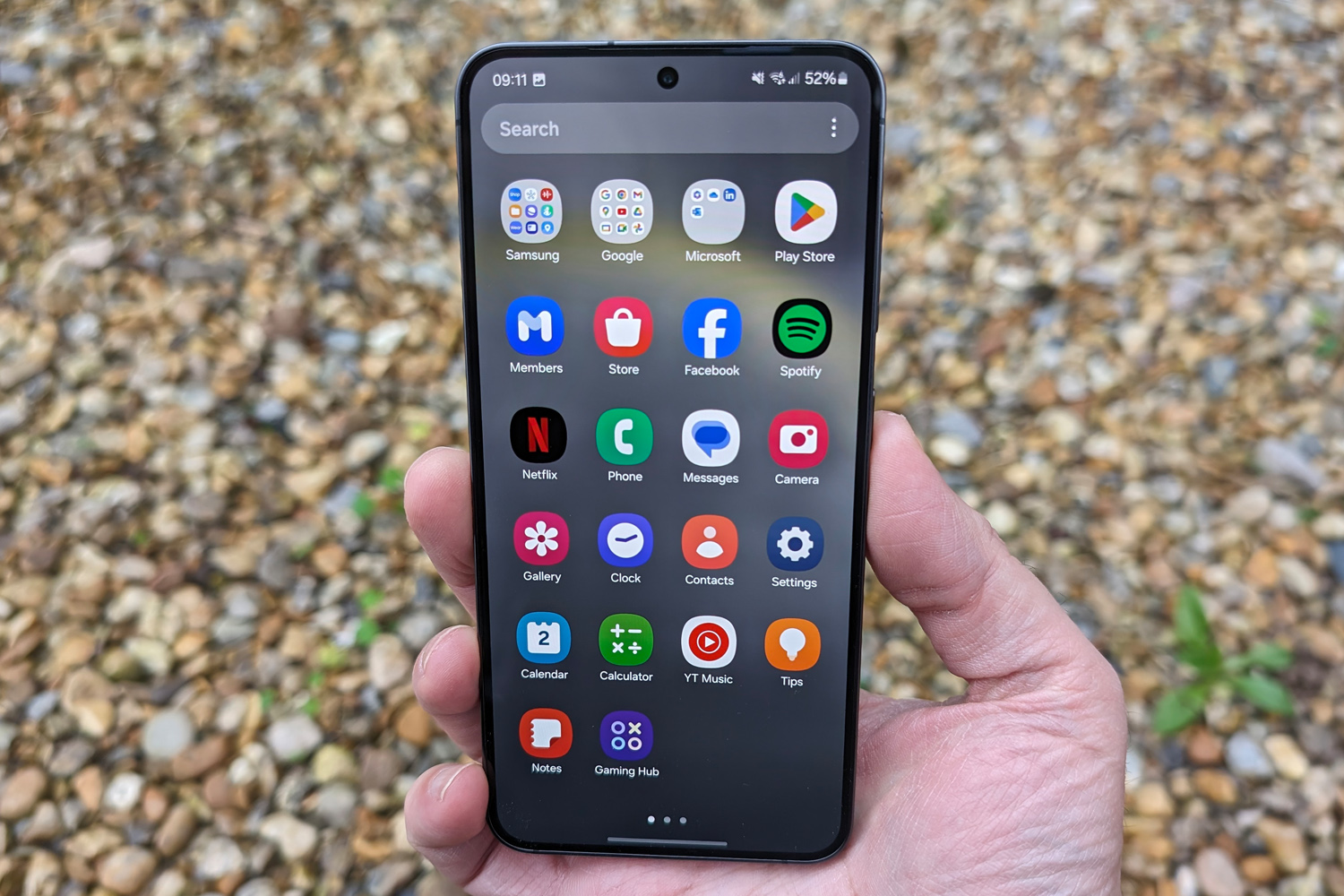
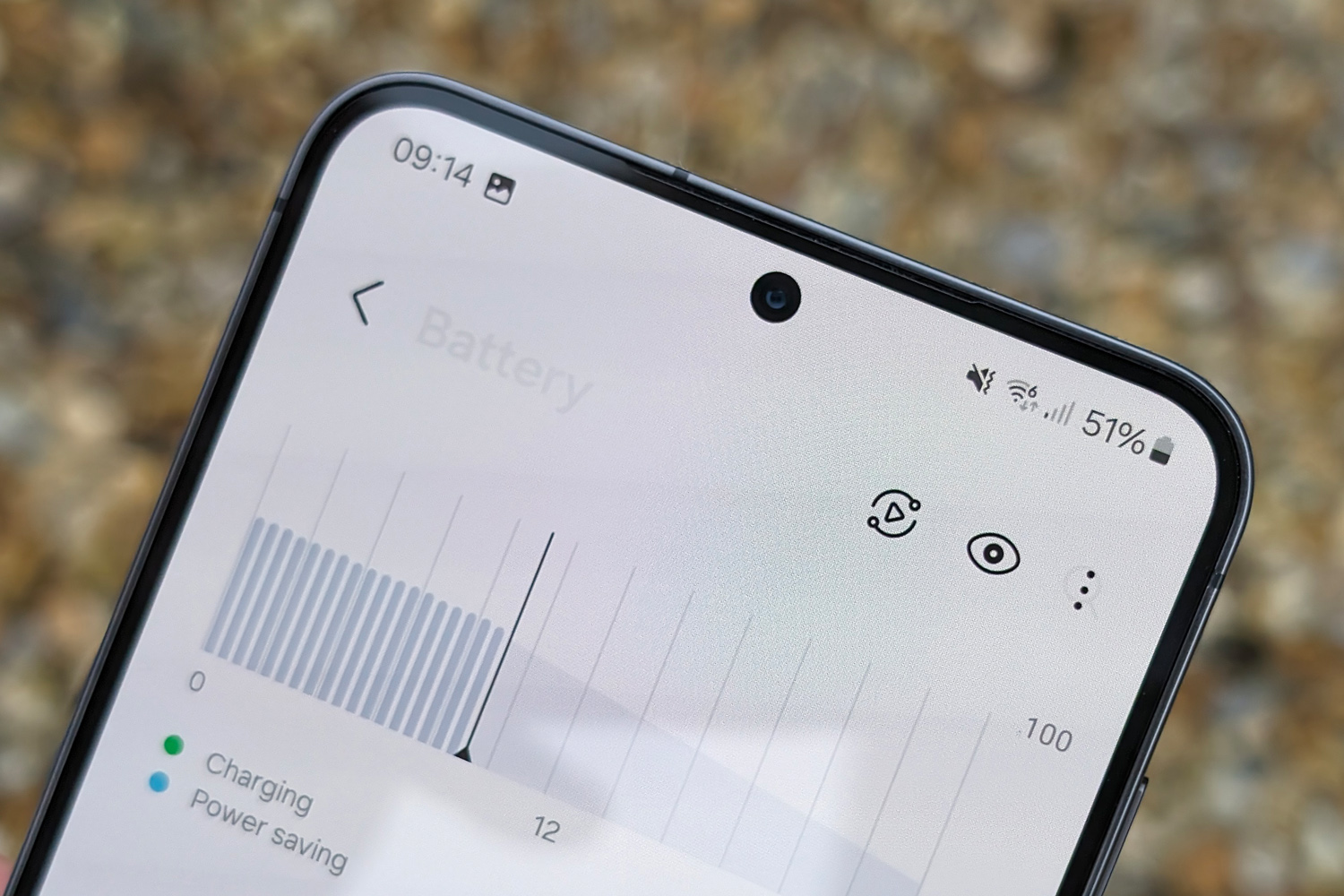
After the Galaxy S23 adopted Snapdragon CPUs across the board, I was hopeful Samsung had put its home-grown Exynos silicon on the backburner. History has shown it to be slower and less power efficient than Qualcomm’s chips, after all. Instead, the Galaxy S24 and S24 Plus are powered by Exynos 2400 For Galaxy chipsets – at least in Europe, anyway.
That ‘For Galaxy’ bit feels a little cheeky if you ask me. It makes sense in the Galaxy S24 Ultra: the Snapdragon 8 Gen 3 For Galaxy gives Samsung an edge over rivals that use off-the-shelf versions of the same chip, thanks to faster CPU and GPU speeds. But who else is using Exynos silicon for Samsung to produce both an in-house and ‘standard’ chip?
On paper, there’s not a huge power disparity between the two chipsets; in practice, the Snapdragon has a 10-15% lead in most synthetic benchmarks. But if you don’t obsess over numbers, you’ll be very happy with the S24’s performance. It always felt snappy and responsive to me, opening apps quickly and handling multitasking with ease.
Gaming was equally high grade, with Call of Duty Mobile staying smooth after several multiplayer rounds at the highest detail settings. The S24 hasn’t got to work as hard as the S24 Plus, which has a higher screen resolution, so it stayed a little cooler during gameplay.
Samsung has boosted the Galaxy S24’s battery capacity to 4000mAh, up from 3900mAh on the S23, but there are no major longevity gains to be had. It lasted me through entire days of general use, only needing a mid-afternoon refill when heavily relying on 5G instead of Wi-Fi. The latest Exynos chips have pretty efficient CPUs and GPUs, but Qualcomm’s modems are still less power hungry.
Wired and wireless charging remain at 25W and 15W respectively, which is on par with Apple and Google, but leagues behind rivals out of China. You’ll need to step up to the Galaxy S24 Plus to get faster 45W top-ups over USB-C.
Samsung Galaxy S24 verdict
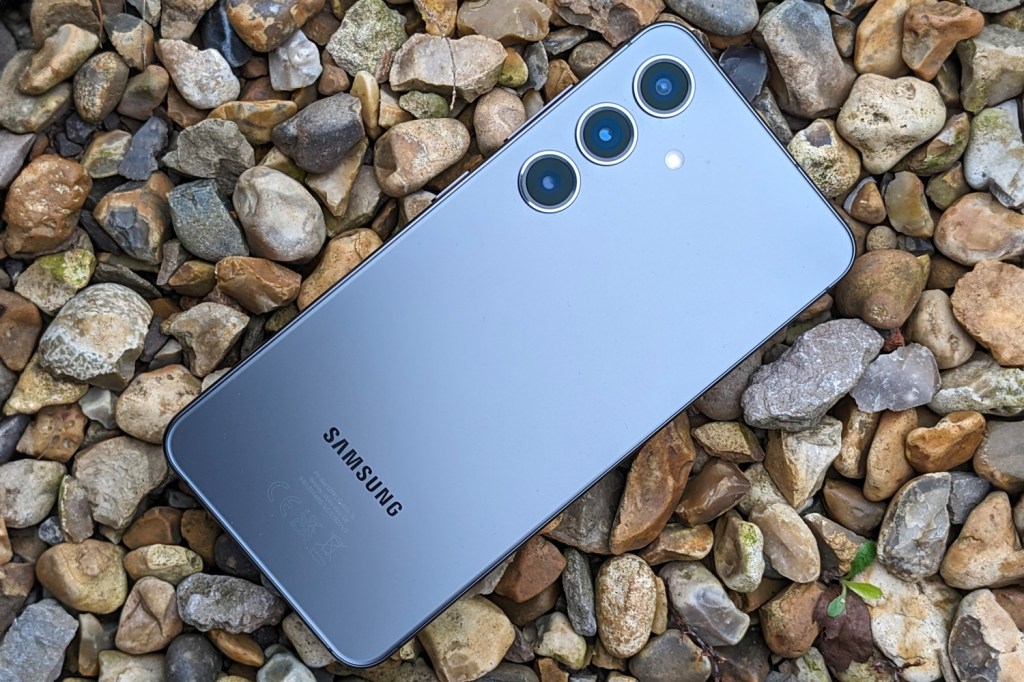
Newfound focus on AI aside, Samsung can be forgiven for playing it safe with the Galaxy S24. Little else in the Android world is as pocket-friendly, and a dedicated zoom lens gives it a hardware lead over the vanilla iPhone 15.
Slimmer screen bezels and slightly sharper styling make it feel like a refinement on what came before, while performance it as I’d expect from a top-tier phone. Battery life is decent enough too, even if the Exynos variant feels at a slight disadvantage to the Snapdragon version.
Spec snobs will find the lack of camera upgrades disappointing. But as long as Apple and Google continue to save the best hardware for their flagship phones, it makes sense for Samsung to do the same. Most people picking up an S24 will be happy enough with its snaps, and an otherwise extensive feature list makes it an ace Android all-rounder.
Stuff Says…
The Samsung Galaxy S24 embraces AI and gets some welcome hardware tweaks. It’s not the most exciting generational upgrade, and won’t appeal to camera spec snobs, but will surely sell like hotcakes anyway.
Pros
Streamlined design and slicker screen
AI integrations can be very useful
Powerful yet pocket friendly
Cons
Bested by rivals on camera quality
Exynos CPU not the best for battery life
Samsung Galaxy S24 technical specifications
| Screen | 6.2in FHD+ AMOLED w/ 1-120Hz LTPO, 2600nit brightness |
| CPU | Samsung Exynos 2400 For Galaxy (Europe) Qualcomm Snapdragon 8 Gen 3 (US) |
| Memory | 8GB RAM |
| Cameras | 50MP, f/1.8 main w/ dual pixel AF, OIS + 10MP, f/2.4 telephoto w/ 3x optical zoom,PDAF, OIS + 12MP, f/2.2 ultrawide rear 12MP, f/2.2 front w/ dual pixel AF |
| Storage | 128/256GB on-board |
| Operating system | Android 14 w/ OneUI 6.1 |
| Battery | 4000mAh w/ 25W wired, 15W wireless charging |
| Dimensions | 147x71x7.6mm, 167g |


